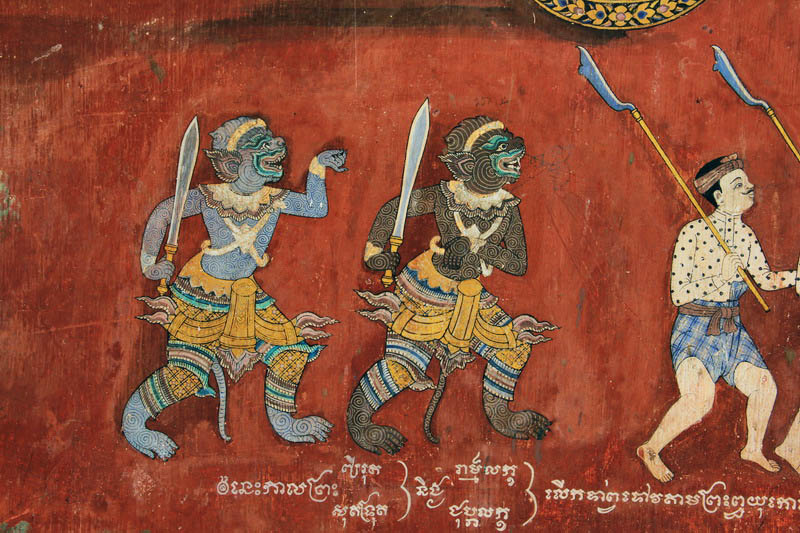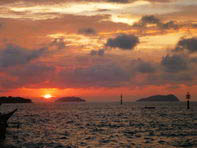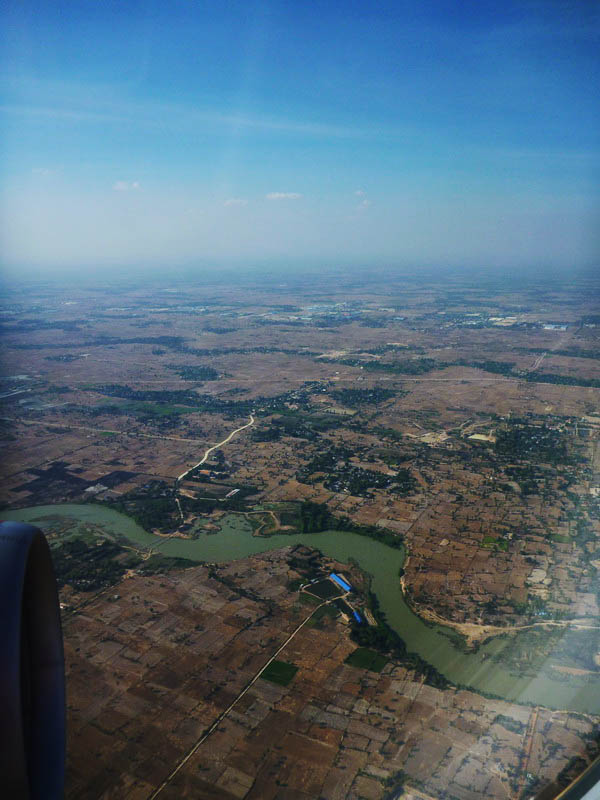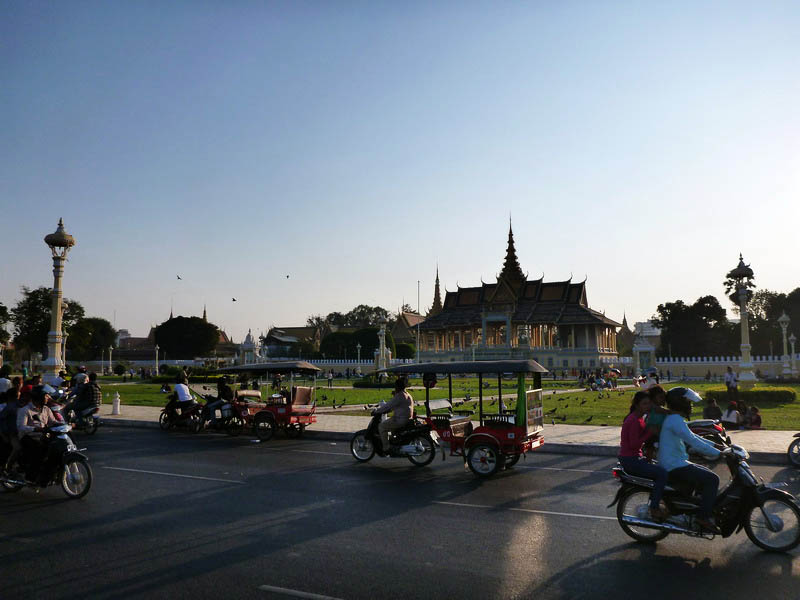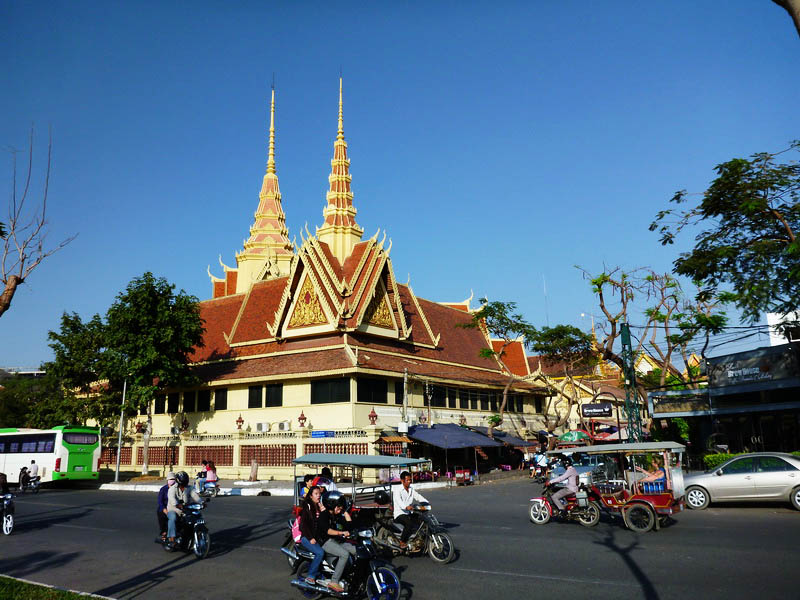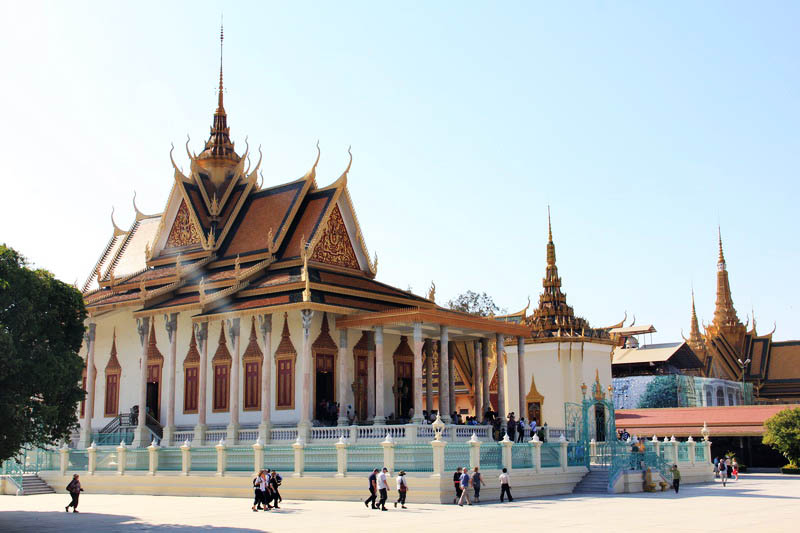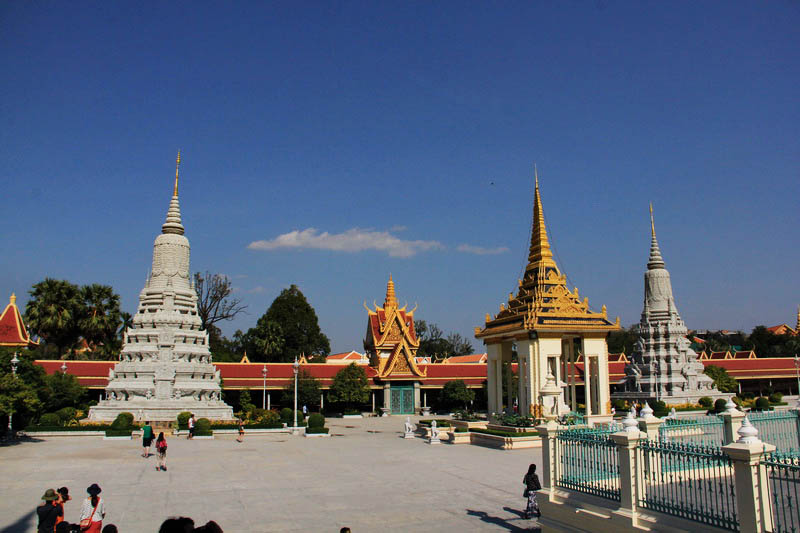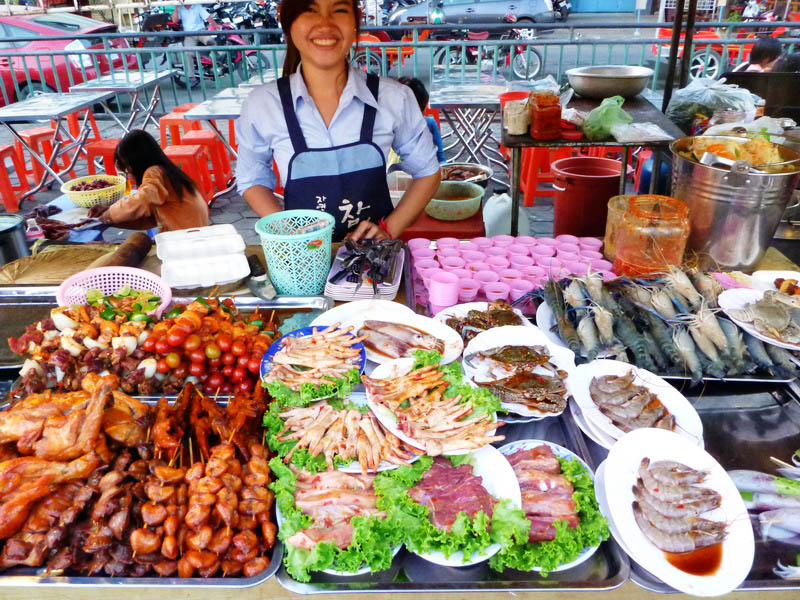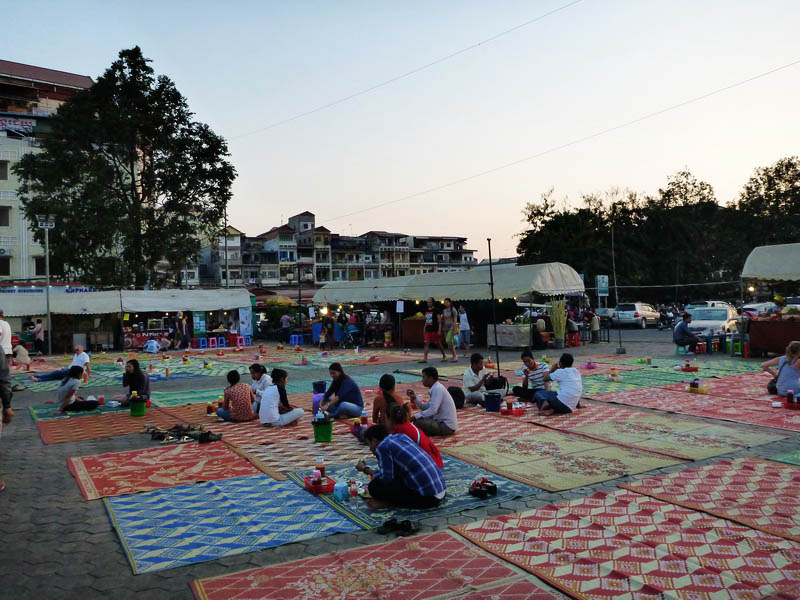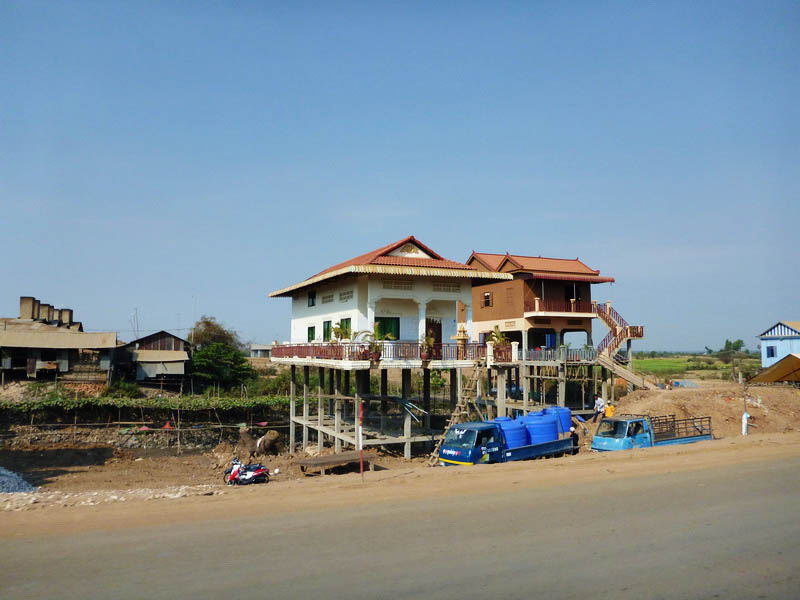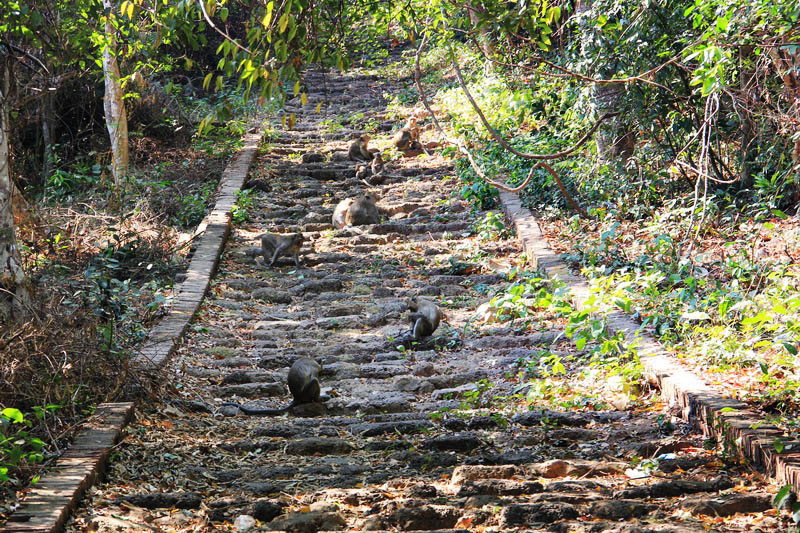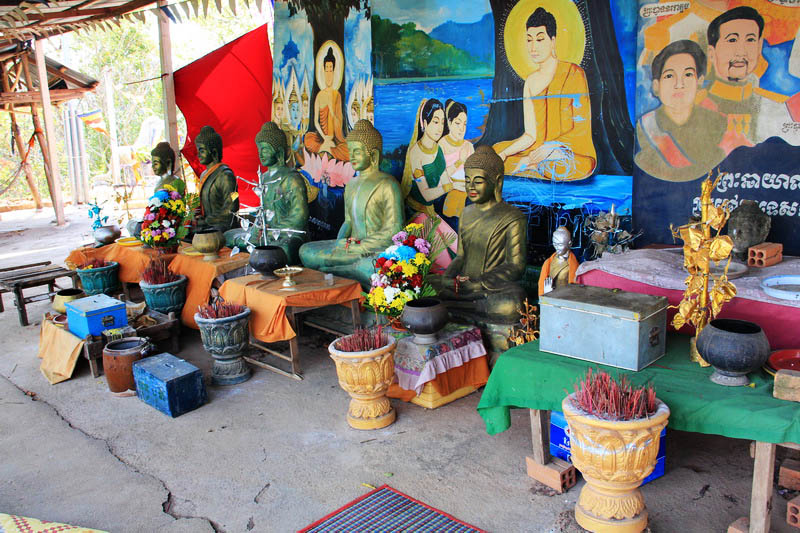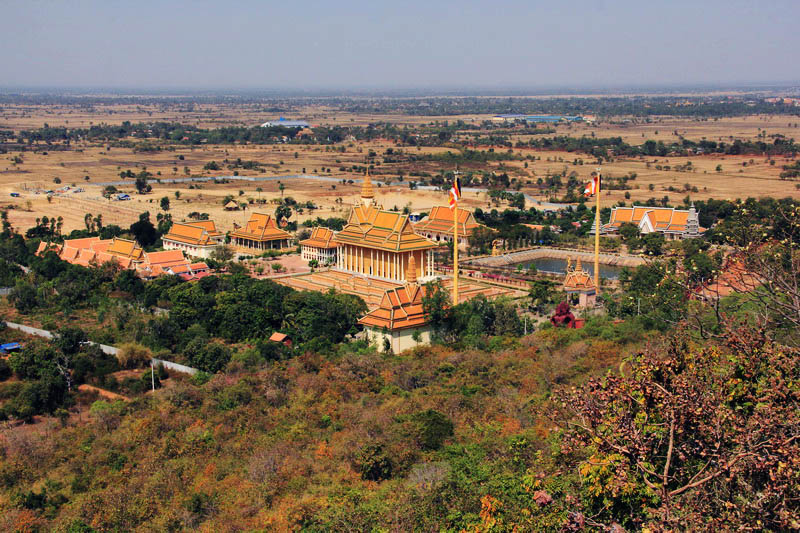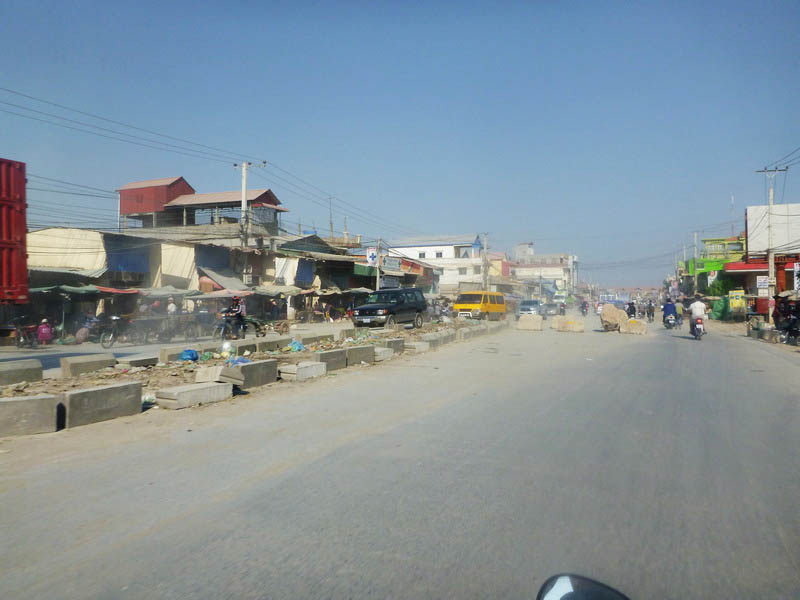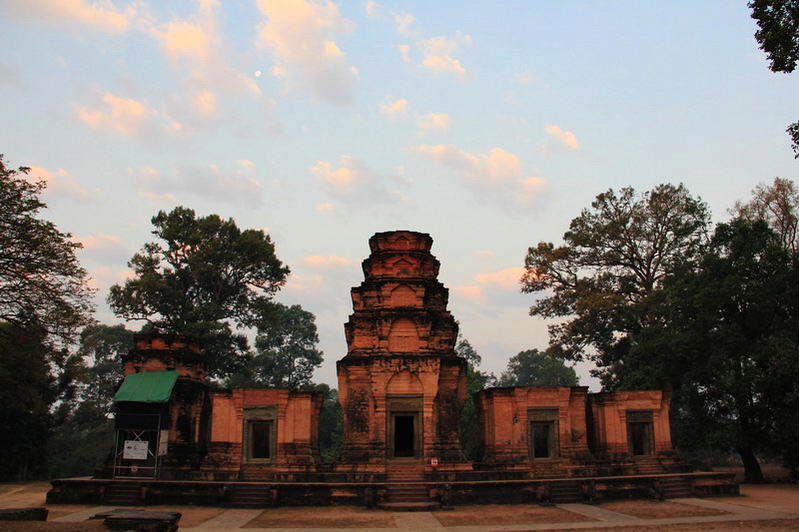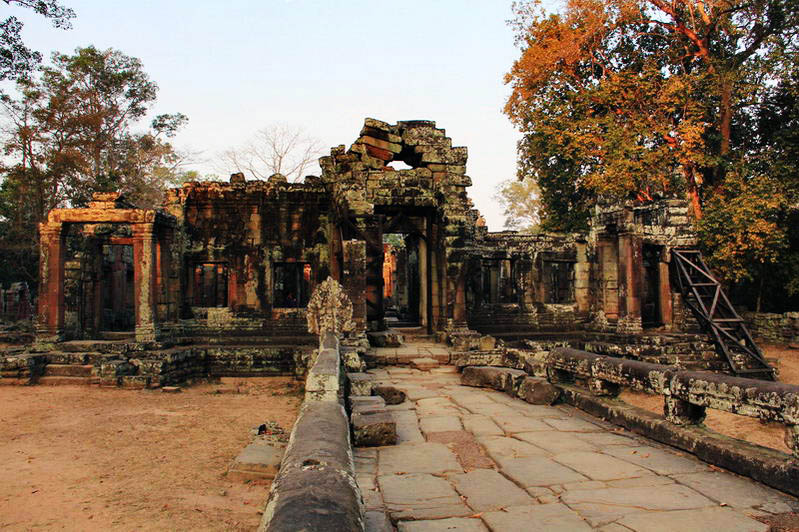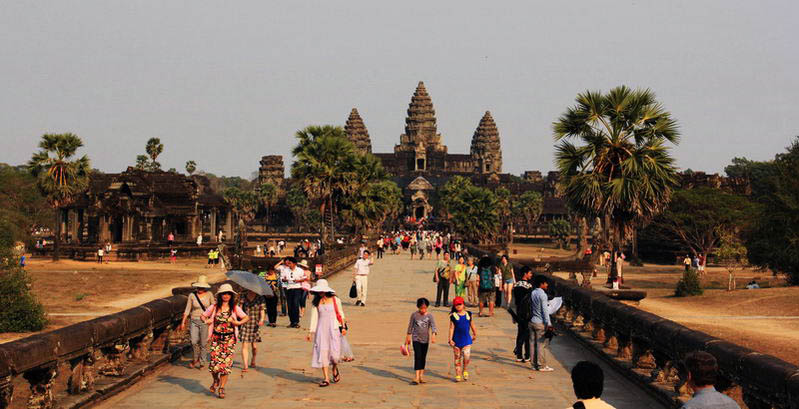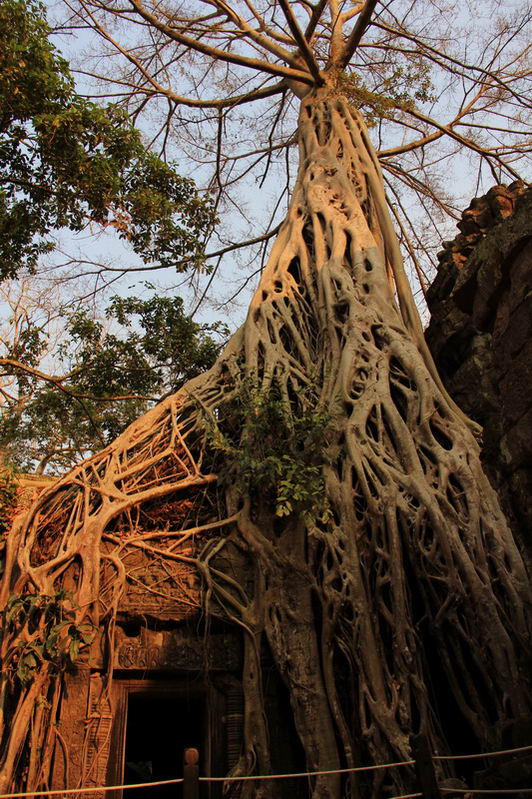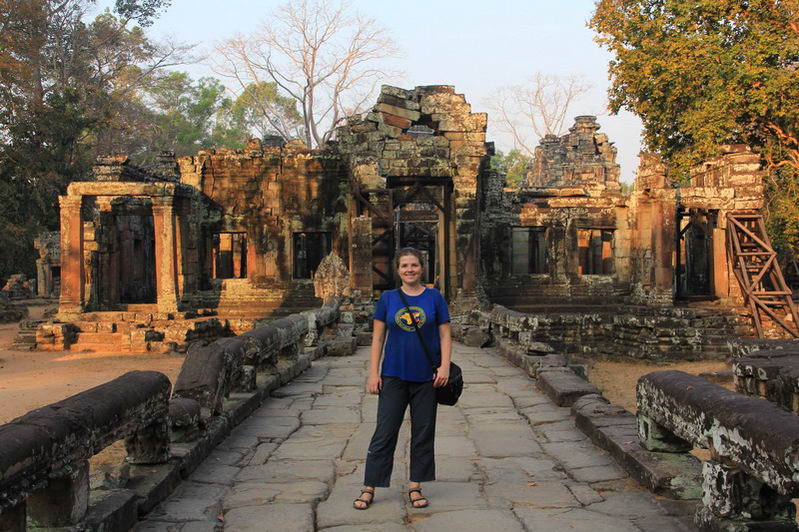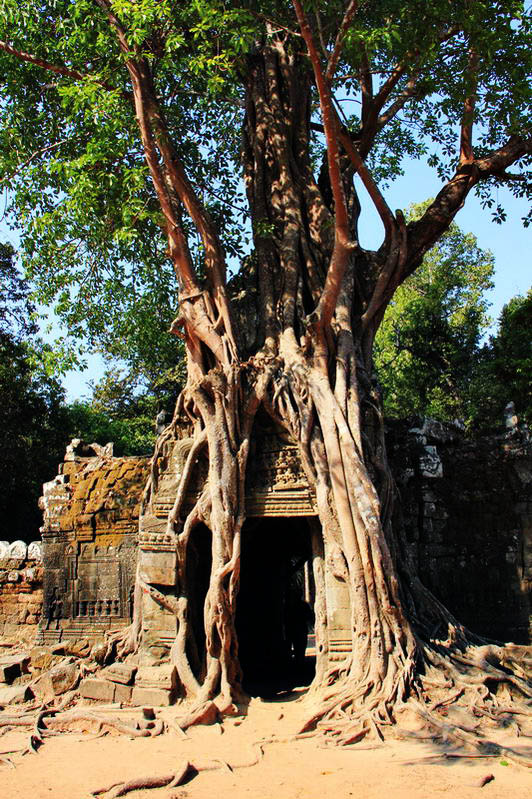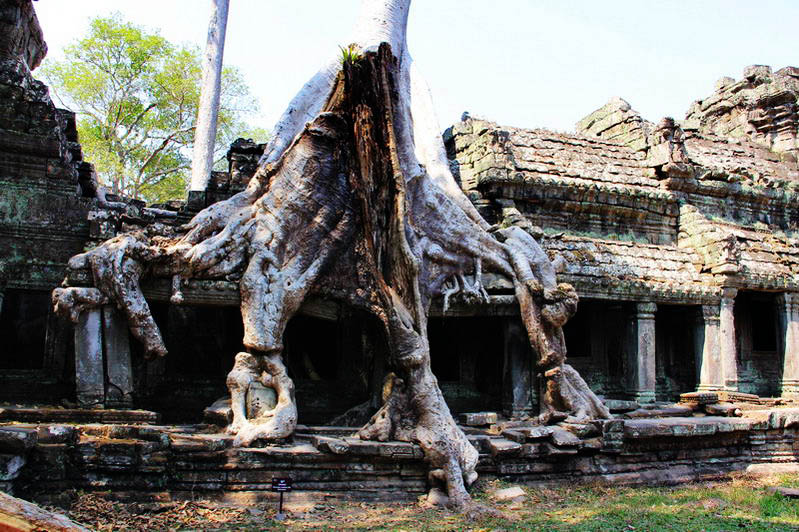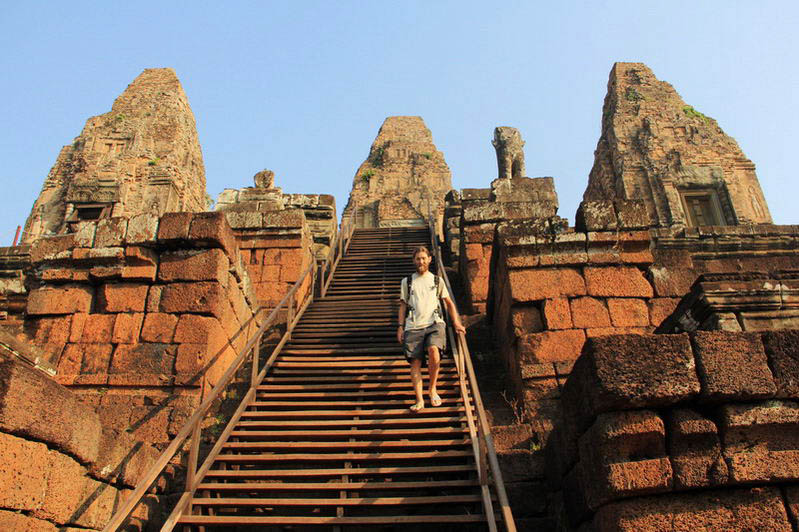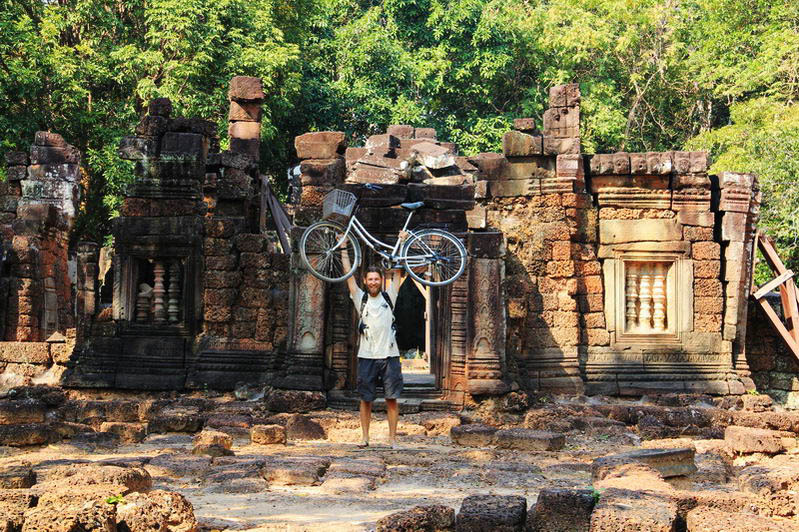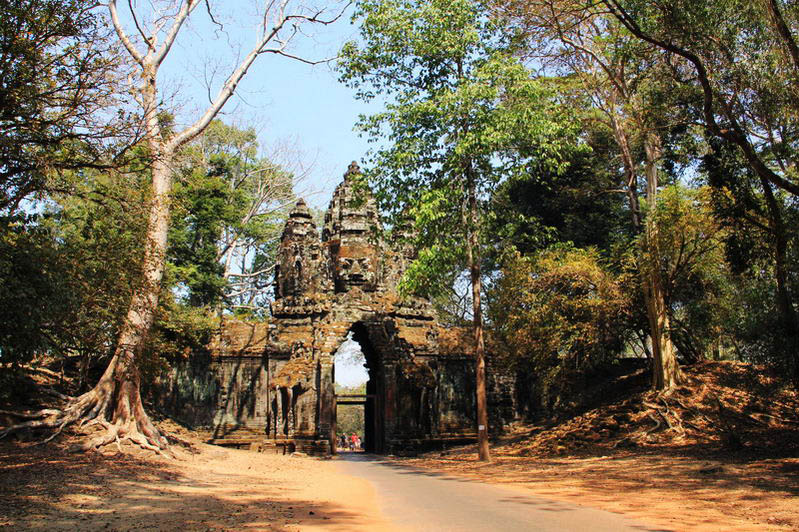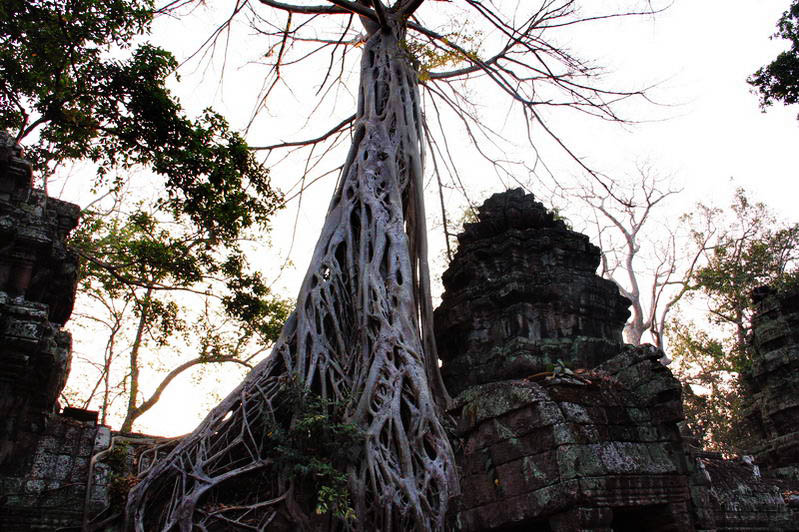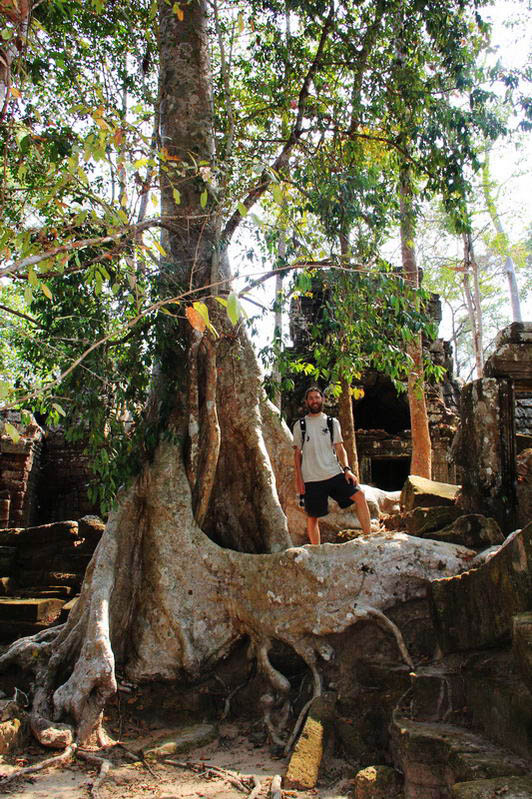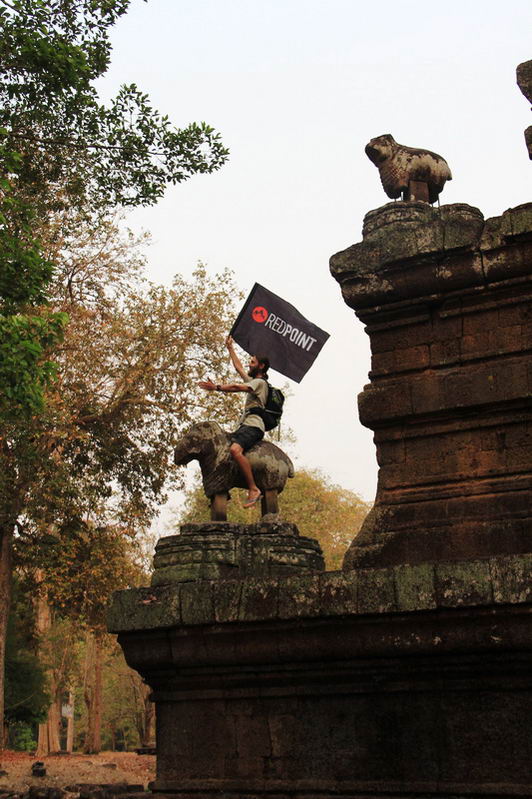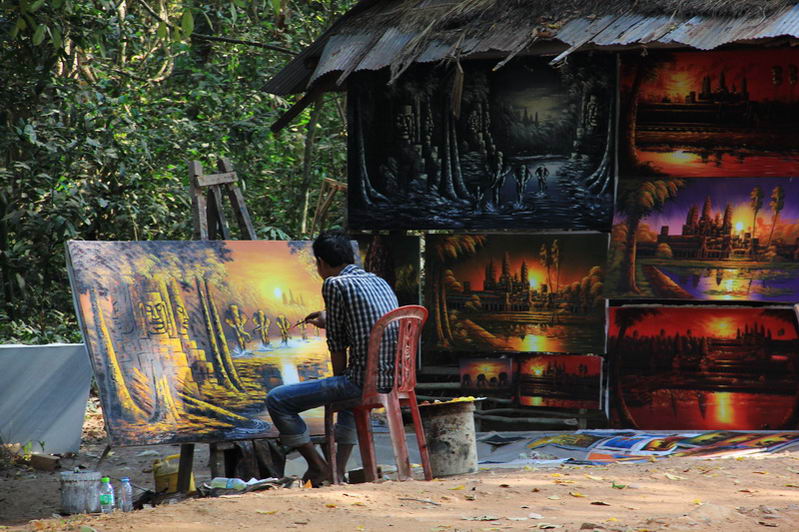After visiting Malaysia, we planned to fly from Kuala Lumpur to the capital of Cambodia, Phnom Penh.
And so, upon arrival in Phnom Penh, a funny incident happened to me (Pavel), which bothered me all the time I was in Cambodia, but fortunately ended well.
- Phnom Penh
- Bike ride to Udong Temples
- Killing fields under the Khmer Rouge regime
- Angkor Wat Temple Complex in 3 days by bike
Travel notes: Malaysia and Borneo island
Here we are in Malaysia.
From Manila, we flew to Kota Kinabalu, the capital of Sabah, which is located on the island of Borneo (Kalimantan).
Malaysia greeted us with torrential rain...
Phnom Penh
So, upon arrival in Phnom Penh, we needed to apply for a visa to visit Thailand, we filled out the questionnaires, went to the border guards' desk and gave them our questionnaires. A regular 3x4 photo is also required for a visa, and we printed several sets at home at once - 2 of my photos and two of Olga's on one page. Well, we hand this page to the border guard - they say, cut off how much you need there... Well, he cut off two photos with Olga... And it turns out that it's not even my face that's glued to my visa application form at all. I'm trying to explain to him - what did you do, you fool? Come on, give it all back! And he waves his hands - go on, don't hold up the queue.
Well, I went further, maybe they'll see and figure it out... But no one said anything. And even when leaving the country, there were no questions, so it seems that the photo is needed only for solidity, and if you suddenly find that you forgot to take your photo for a visa to Cambodia, then you can find something suitable in an advertising brochure or a magazine on the plane.
Even from the plane, we saw that the territory of Cambodia is flat as a table, only hills stick out in some places. The surface we were flying over was completely covered with patches of fields, country roads, small towns.
After leaving the airport, the first thing we did was try to withdraw the local currency from the ATM. But all ATMs stubbornly tried to issue dollars, and the only one that had riels wants a commission of about $ 4. Well, dollars are dollars. A little later, we found out that dollars move in the country as well as the local currency of the rieli. Riels are used for exchange, small purchases. $ 1 = 4000 riels. So in Cambodia, you can often see a 20,000 riel banknote. There is no difference in using riels or dollars - all prices are converted in both directions at the above exchange rate.
When we went outside from the airport, we realized that no one had heard anything about the traffic rules here. The tuk-tuk ride to the hotel convinced us even more of this. Transport moves on the oncoming lane, diagonally, crosses the roadway wherever it pleases, turns through a double solid in dense traffic, ignores traffic lights and a traffic controller.
Strangely enough, there are a lot of tourists of European appearance in the city, we have not seen so many Europeans anywhere else. Our whole little hotel is packed with Europeans. But despite such a large number of tourists, the English language of the locals is much worse than in the Philippines or Malaysia. They don't know him. Basically. A maximum of two or three numerals. It is very rare, but there are people with good English. And some people don't seem to want to understand the question they were asked in English, and if it was just in the middle of the street, but they don't want to understand you and they don't pay attention to you in cafes and shops (in some, not very tourist ones).
Apart from the royal palace, there are no special attractions in Phnom Penh, there is also nothing much to do, but we were waiting for a passport with a Thai visa and had free time to explore the surroundings. The Royal Palace is quite interesting and beautiful, but the crowds of tourists do not allow you to enjoy its view. In addition, the entire territory is open to the scorching sun, there is almost no shade. The palace is open to the public from 7 to 11 and then from 14 to 17.
The embankment offers a good view of the river and the opposite shore, especially in the sunset rays. There is a night market near the embankment and the bus terminal. Here it's a mix of shopping and cafes. The cafe offers barbecue from everything that is possible, and the area for eating is mats.
Cost Information:
- Tuk-tuk from the airport $ 4 after long haggling, without haggling 5
- The room with shower and toilet is very small 5$
- Meals are on average $ 2.5 lunch/dinner per person without drinks
- Bike rental $ 6/day
- 1 liter of gasoline$
- Bike rental $ 3/day
- Beer 0.65$ can 0.33, in a cafe from 0.75$ per glass 0.33
- 1.5 liter bottle of water 0.5$ = 2000 riels
- Entrance to the Royal Palace 6.5$
- Entrance to the hills in Udong 1$
- Entrance to Choeng Ek 6$
- Parking for a bike in Udong is 0.5$ = 2000 riels. Parking for a bike at Choeng Ek 0.25$ = 1000 riels
- A ticket to Siem Reap by bus from $ 8 - $ 15 (departure almost every hour throughout the day, sometimes more often)
- A ticket to Siem Reap by boat is $35 (departure only at 7:30)
- In most ATMs, a commission of $ 4-5 is charged for cash withdrawals, regardless of the amount, only one Maybank bank did not take the commission.
Bike ride to Udong Temples
One day we took a bike and went to the village of Udong (Oudong), it is located 40 km from Phnom Penh. There are several stupas on a hill near Udong, the only one in the area, and monks live there.
Putting everything we knew about the rules of the road out of our heads, we drove to Udong. Just outside the city, the asphalt road ended, turning into a dusty and not very smooth direction. However, soon we saw the asphalt again, but not for long. This happened many times, sometimes more often, sometimes less often. Along the road there were temples, local dwellings on stilts (apparently during the rainy season everything floods here), and fetid puddles.
Sometimes the road was crossed by very tall and very thin cows, in no way resembling our well-fed cows. The fact that we are approaching the temples was reminded by the post with the collection of money - only from foreigners. After putting the bike in the paid parking lot (they are often stolen here), we went to the stupas.
Even on the approach, we were surrounded by local kids asking, and sometimes demanding money. But we were not led on them. We decided to climb the trail rather than the central staircase, but after discovering a large flock of macaques with rather aggressive and toothy males, we turned to the traditional path.
There is a view from the hill in all directions. No hills interfere with the view - everything is absolutely flat.
There are several hills and there are paths between them that allow you to move from hill to hill without going down to the very bottom. There are not very many people, but they are there. Mostly locals. We haven't seen any tourists in half a day. Although they can be understood, there is not much to look at - but the landscapes are typical of central Cambodia.
After walking through the hills, looking at the stupas and monks, we drove back. And on the way to Phnom Penh, we looked at the killing fields of the Khmer Rouge regime
Killing fields under the Khmer Rouge regime
We decided to return not by the same road, but by a ring, stopping at the Choeng Yek commune. It was in this commune that one of the most famous killing fields under the Khmer Rouge regime was located. The road turned out to be much worse than the one we were driving on. The almost complete absence of asphalt, terrible pits and terrible dust. After spending 2 hours on 40 kilometers and covered with a thick layer of dust, we arrived at Choeng Yek. Everything is organized here - a closed area, tickets, an audio guide in almost any language, a brochure with a map and a brief history.
At the entrance, you come to a memorial stupa, where skulls, jaws and some other bones are stacked, extracted from group graves, the remains of several thousand people are in this stupa, and many continue to lie in the ground. The route follows the same route that the prisoners took. The parking lot of trucks in which people were delivered. The barrack in which they lived awaiting death, if the number of prisoners did not allow them to kill all in one evening. Graves.
The audio guide includes not only dry historical facts, but also eyewitness accounts: surviving prisoners, guards... Many remains have never been recovered from the graves, so bones and clothes still come out of the ground. Sometimes there are signs asking you not to step on bones and immediately notice the remains sticking out of the dust. And sometimes, looking at the ground yourself, you notice bones... In general, the impression of the place is quite depressing, especially in the audio guide, which tells in its native language about everything that happened under the Khmer Rouge regime.
It was getting close to evening, and we still had to get to the hotel. Our way passed through the suburbs of Phnom Penh. At the sight of what is called a road here and the chaotic traffic and pedestrians, one name came to mind: The Road of Death. Randomly scattered fragments of a road under construction, piles of rubble and sand, drops of 20-30 or even 40 centimeters, a lot of construction equipment, detours, millions of bikes, a cloud of thick dust, shopping malls located right on the roadway are just an incomplete list of the "charms" of this road. But, fortunately, we got to our hotel without incident, just a couple of times miraculously without ramming a tuk-tuk or hitting a pedestrian.
The next day, when we tried to get to the Thai embassy by tuk-tuk, we found that 5 km is a huge distance and the fare will be 3-5 dollars, the lowest price that we heard as a result of the bidding was 2 dollars. We walked. After collecting our passports with a Thai visa, we went to the center to get bus tickets to Siem Reap. I wanted to go to Siem Reap by boat, but it was very expensive. As in Malaysia and the Philippines, there is no single ticket office, but there are many carriers and you can choose for what price and with what comfort to go.
Angkor Wat Temple Complex in 3 days by bike
Cambodia's main tourist attraction is the ancient Khmer temple complexes, and the most famous of them is Angkor Wat.
In order to see Angkor and other temples, we came to Siem Reap. There are several ways to get from the capital of Cambodia, Phnom Penh to Siem Reap. By bus is the cheapest way ($ 8), but it also takes 8 hours, although they promise 6, one of the advantages is that buses leave almost at any time of the day. By boat on the river - faster (5-6 hours), more picturesque, but more expensive ($35) and only 1 time a day at 7:30 in the morning. Bus and boat tickets can be found in the night market area near the waterfront.
We took the bus in the morning and were in Siem Reap around 6 pm. A quick tour of the hotels gave disappointing results, I had to go to booking and see exactly where there is affordable housing. As a result, we lived for $8 a day for a room with a fan and amenities almost in the very center.
Food in the city is not very cheap - food in an inexpensive cafe starts at $ 2 per serving, and on average from $ 3.5. There is essentially no street food...
There are several ways to move between temples: taxi (expensive, but comfortable), tuk-tuk (less expensive, but still not cheap), bicycle (the most economical option). We chose a bicycle. Bicycles are rented in the city at every corner and in almost every hotel. There are electric bicycles, mountain bikes (3-5$) and the cheapest urban types of our "Ukraine" (1-2$).
In the evening, we went to the tourist information office, took a free map of the territory with temples and suggested routes. As they explained to us, the small and large rings are passed on tuk-tuk in 1 day, Angor Wat and Angor Tom in 2 days, and on 3 days to distant temples. The nearest distant temple is almost 40km in one direction, so it's stressful to get to them on the bike. But we decided to take a ticket for 3 days anyway.
We rented bicycles in the evening, got up at 5 a.m., had breakfast and by 6 o'clock we were at the ticket offices, which are on the way from the city to Angkor. A ticket for 1 day costs $ 20, and for 3 days - $ 40, and for 7 days - $ 60. Tickets for more than 1 day are personalized with a photo. A 3-day ticket entitles you to enter for any three days during the week.
On the first day, we decided to go along the so-called big ring.
In general, there were many temples, and the names were very tricky and we did not remember them well. But we drove counterclockwise - leaving Angor Tom and Angkor Wat for last.
Following the advice from the Internet, we went to the hotel for a rest in the heat of the day. And you can have lunch better and cheaper, and relax in the room, and sleep through the heat itself.
After the rest, we went to Angkor Wat to watch the sunset. There are a lot of people. The queue for the tower is impressive. And so an ordinary temple can only be a little bigger and a little better preserved/restored.
On the second day, we drove along the small ring and started with the Ta Prom temple, it seems like Lara Croft was filmed in it.
In this temple, unlike the others, there are many huge trees that have entwined their roots around the ruins of the temple.
The temple is being actively restored, but its territory is huge and it will take more than one year.
This time we decided that breakfast at five in the morning was not the best idea, so we took a burner and cooked breakfast for ourselves right among the ancient ruins.I must say that this temple is very popular and already at 9 a.m. it was packed to capacity with crowds of Chinese and European pensioners. So you need to come to it early. And still, we liked this temple the most!
Then there were more temples and more, something better, something worse, but all very similar to each other.
Children meet tourists near each temple with a standard set of questions: how are you, what's your name, where from, which capital, then a story about your school and showing a piece of paper, and then the traditional give me a dollar. They don't listen to the answers and don't understand, but in order for them to fall behind, it's worth asking them the same set of questions and not waiting for answers.
We left the third day to visit Angora Tom, and went to Ta Prom again at sunset, by the way, by 17 o'clock the people had almost left.
So three days flew by in Siem Reap and Angora, and if you do not go to distant temples, then this time is quite long enough to get acquainted with the temples.
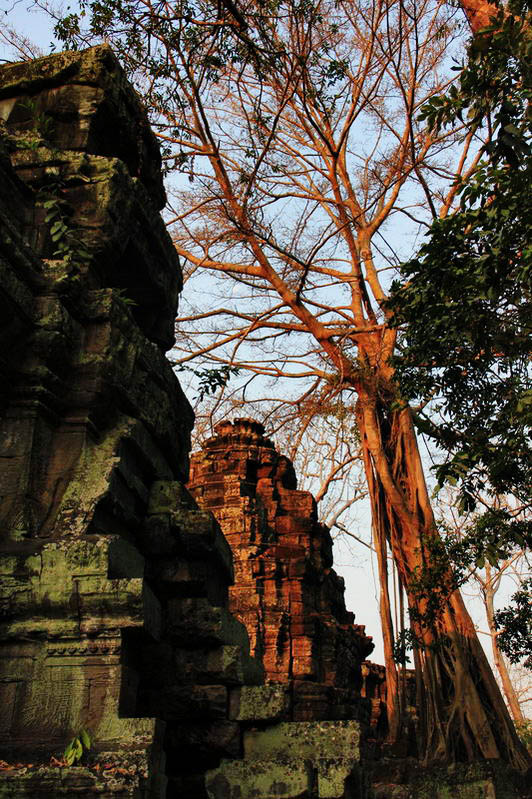
Cost Information:
- Bus Phnom Penh - Siem Reap 8$
- Boat Phnom Penh - Siem Reap 35$
- Accommodation in Siem Reap, we lived for $ 8, on average from $ 15
- Food from $2 per dish
- Water 1.5 liters 0.5$
- Beer in the store from $ 0.5, in the cafe from $ 1 for 0.33 liters
- Bike rental from $ 1/day plus a deposit of $ 20
- Entrance to Angkor for 1 day is $ 20, for 3 days $ 40, for a week $ 60
- Angora inspection from a balloon $20
- Siem Reap-Bangkok bus from $10
